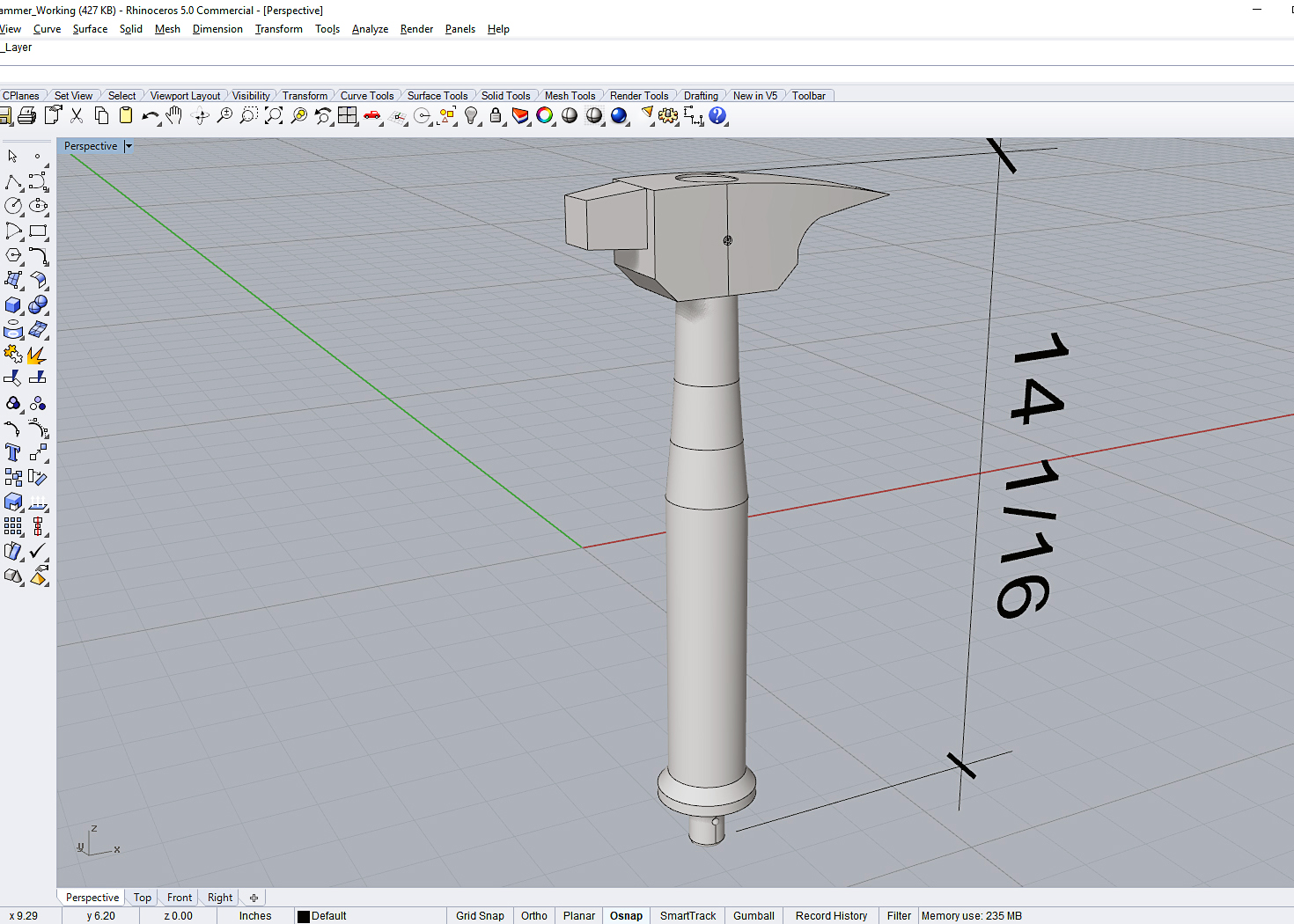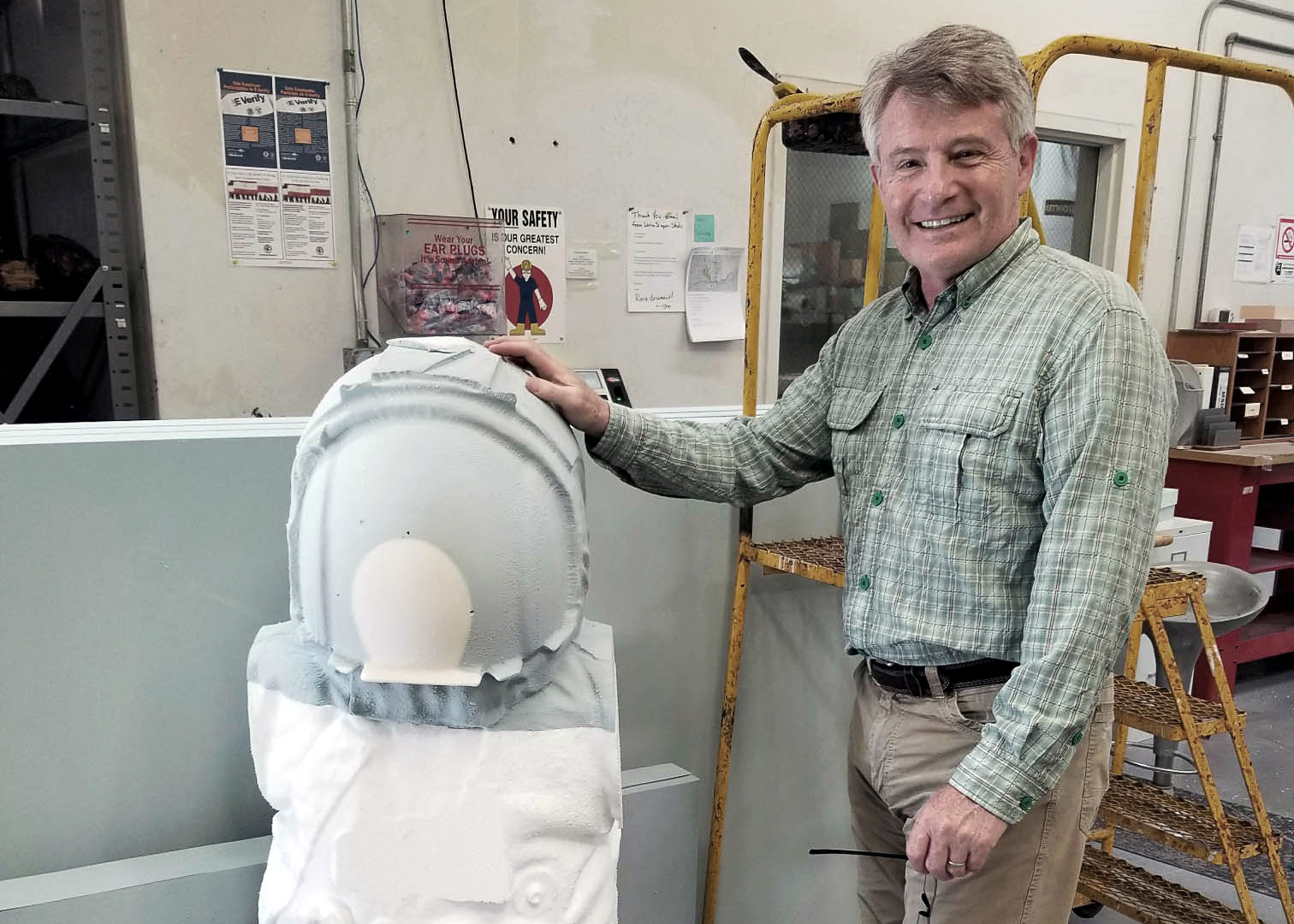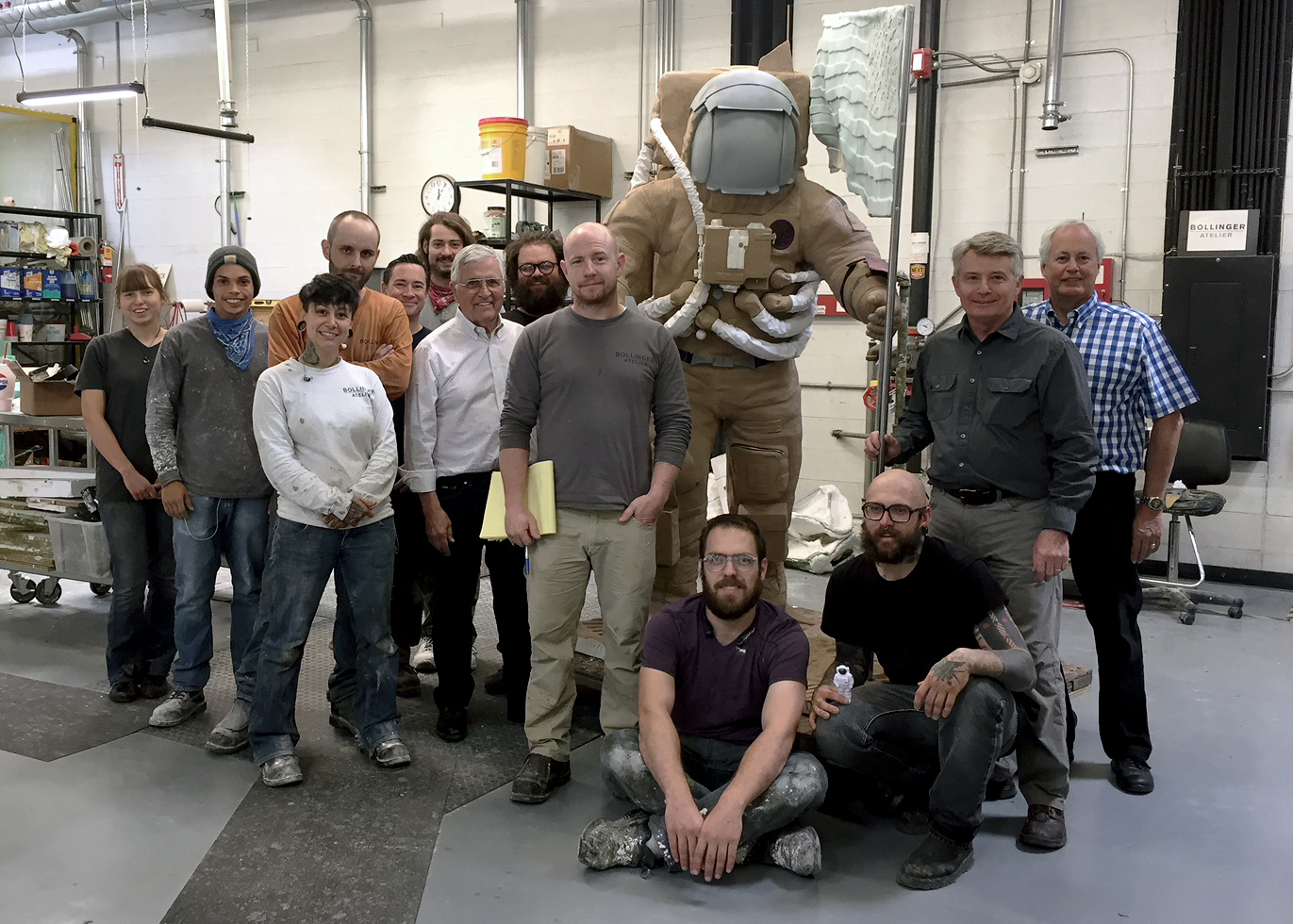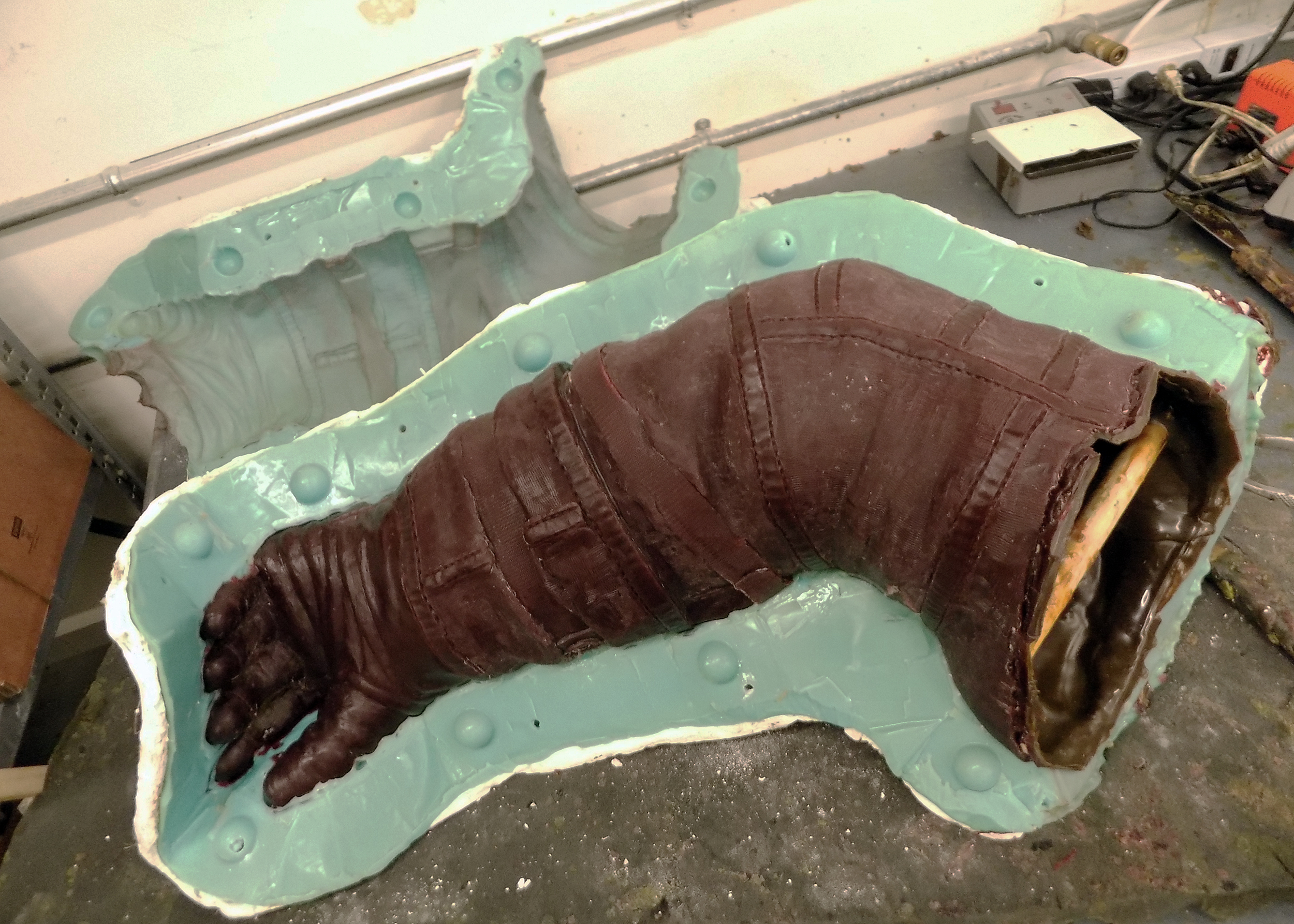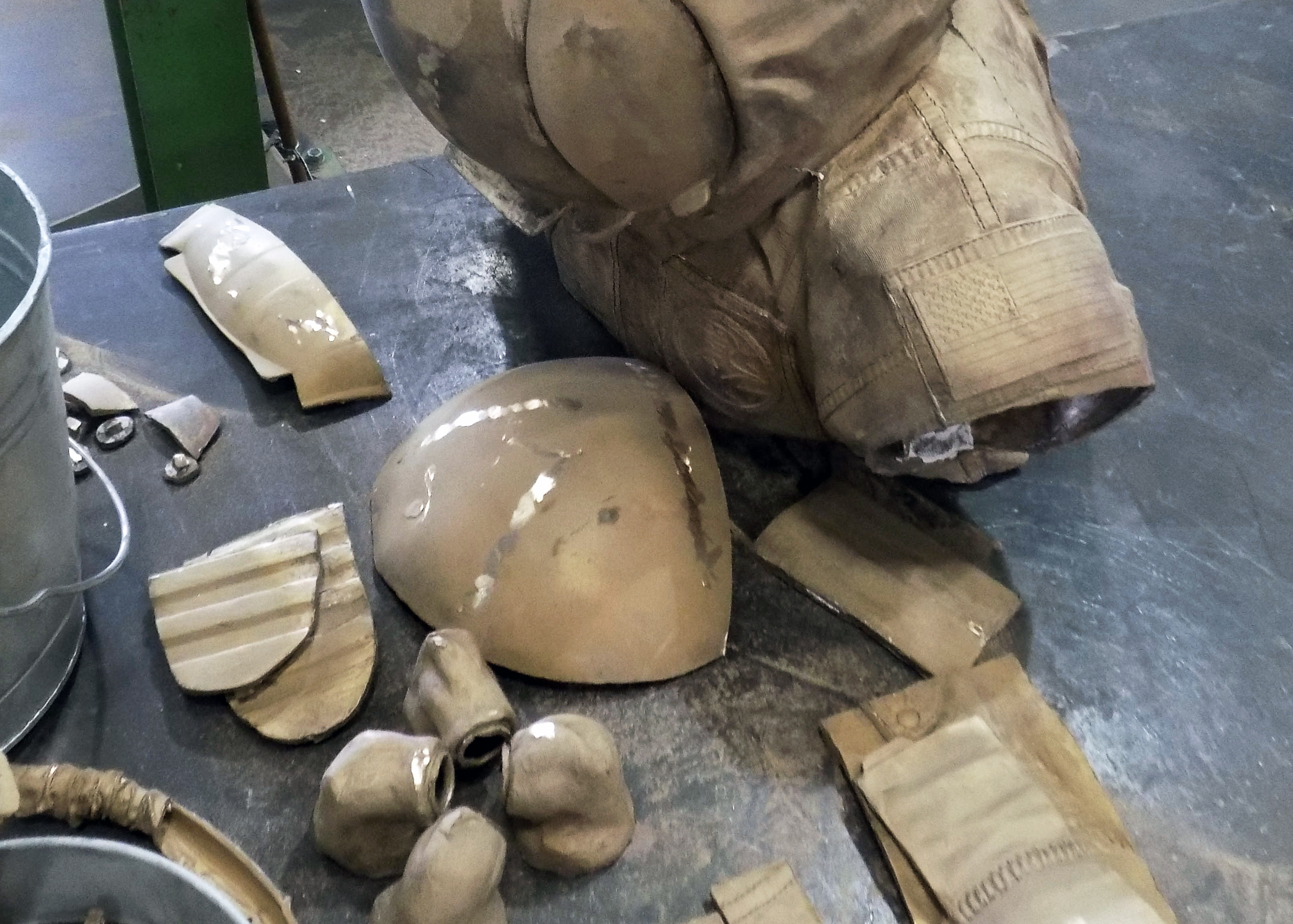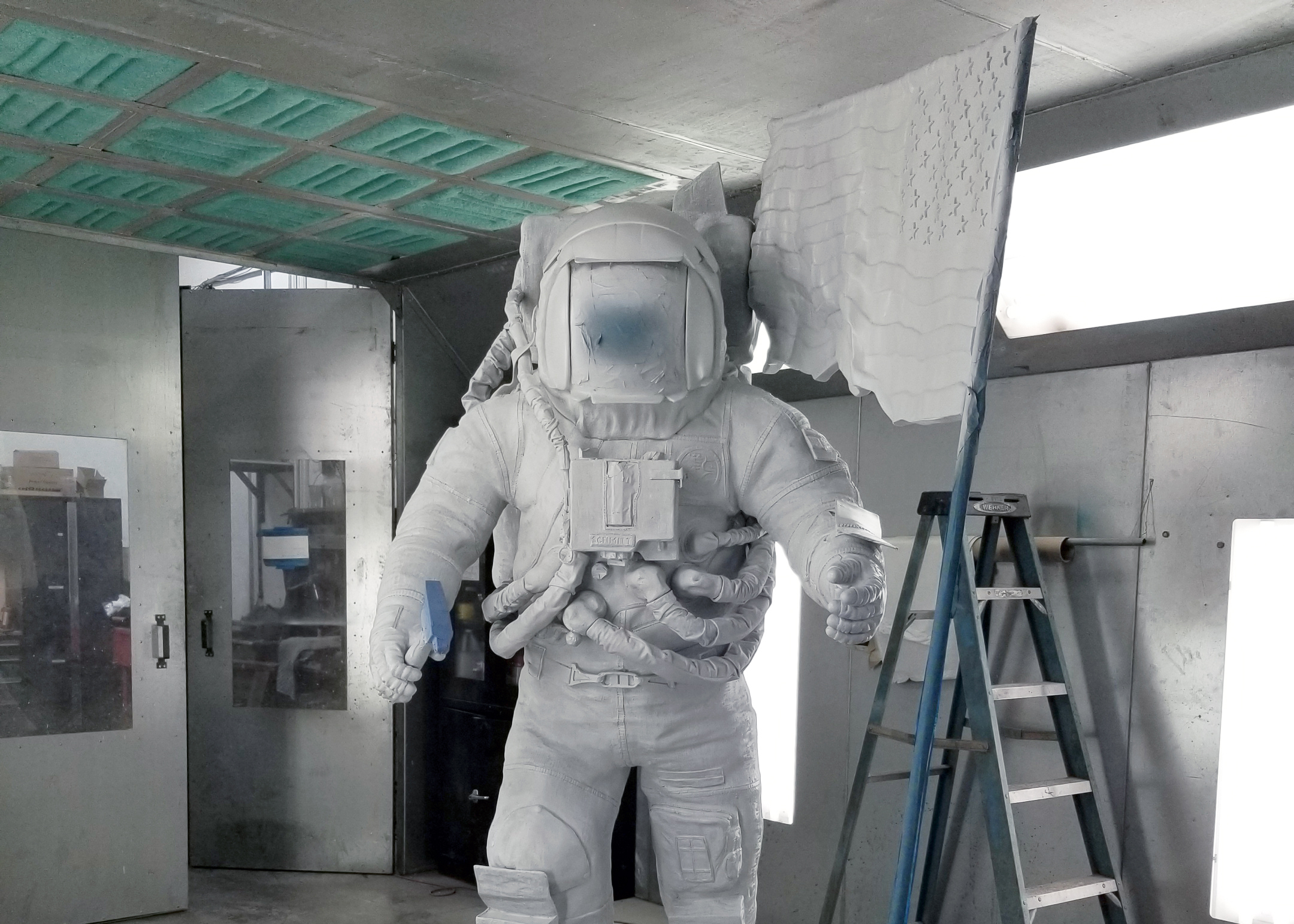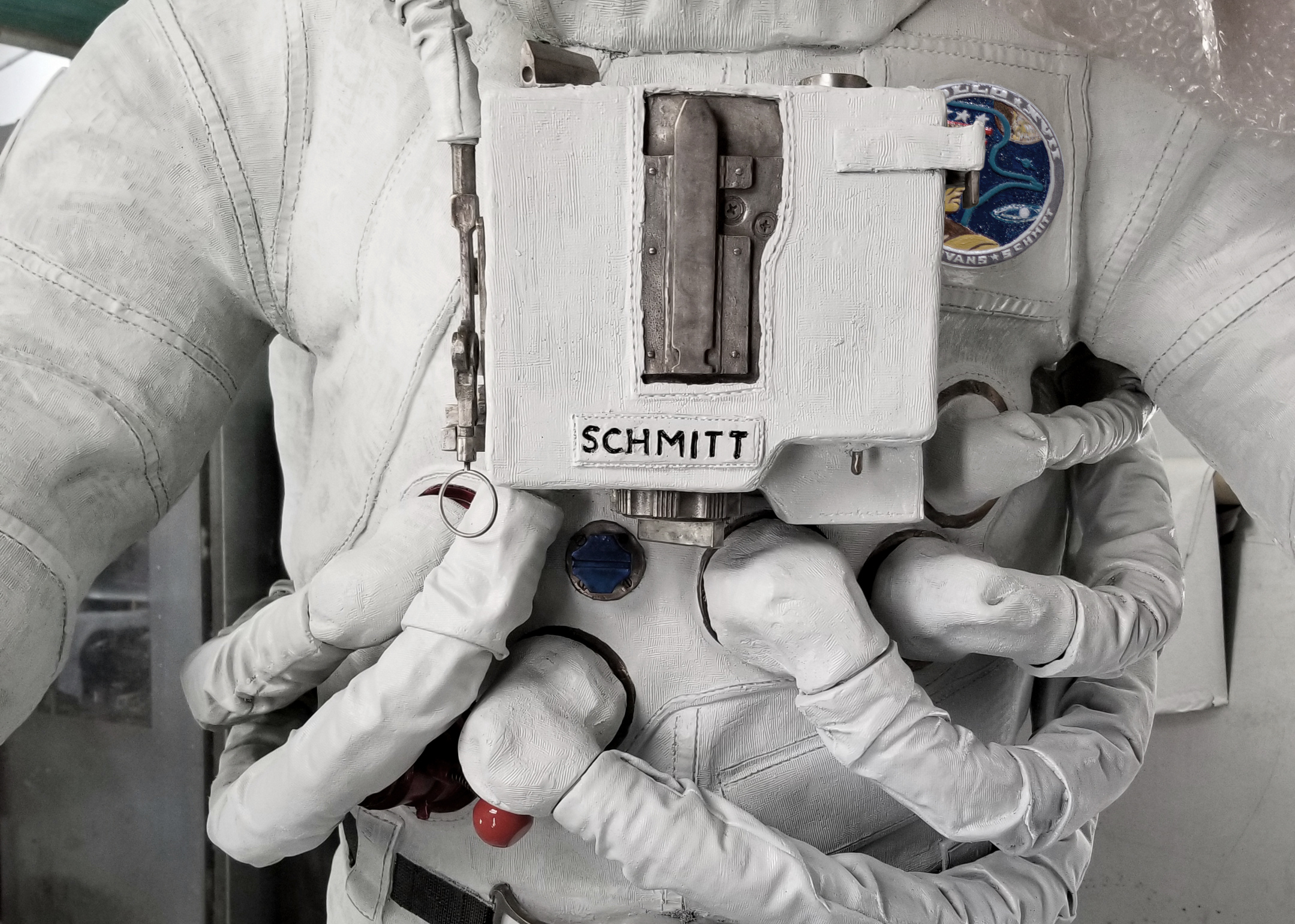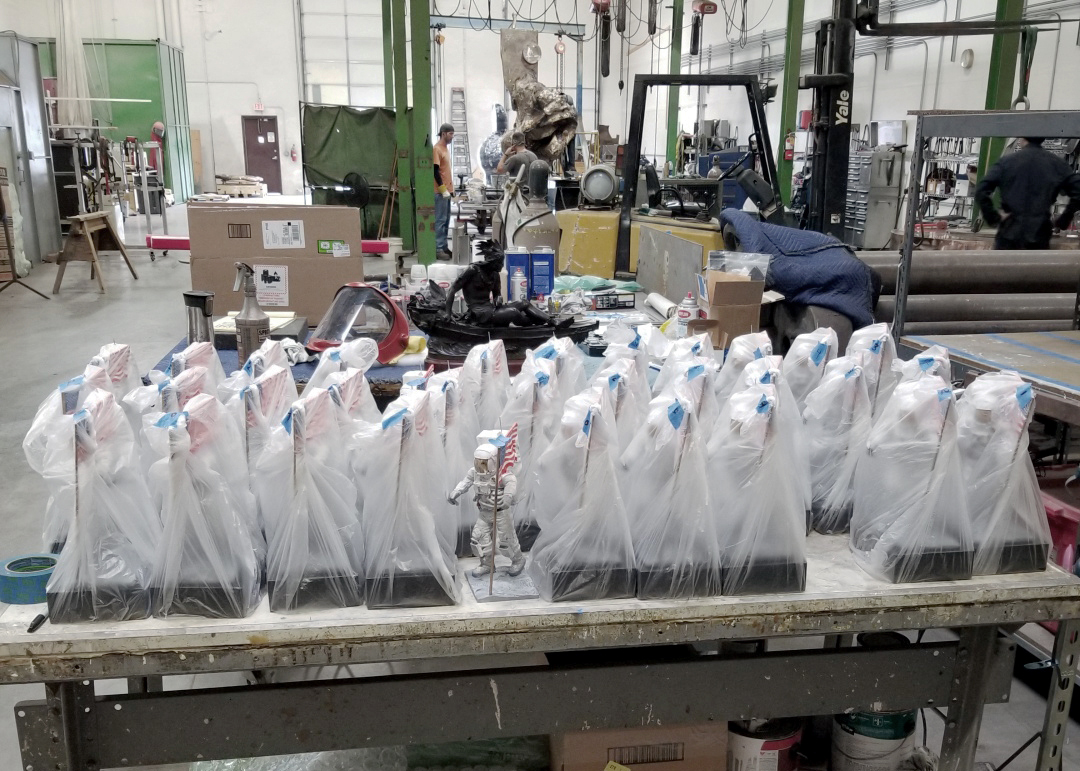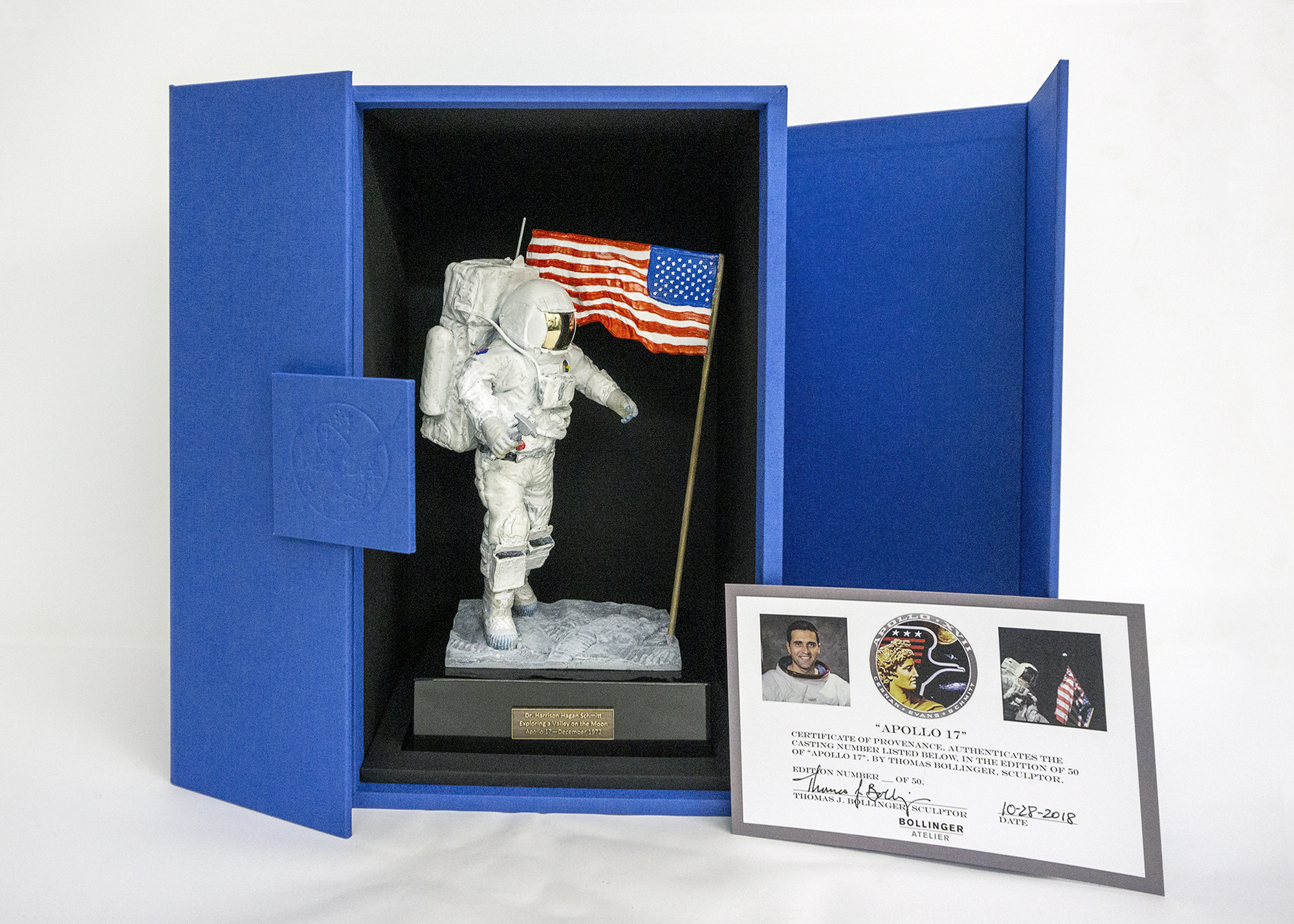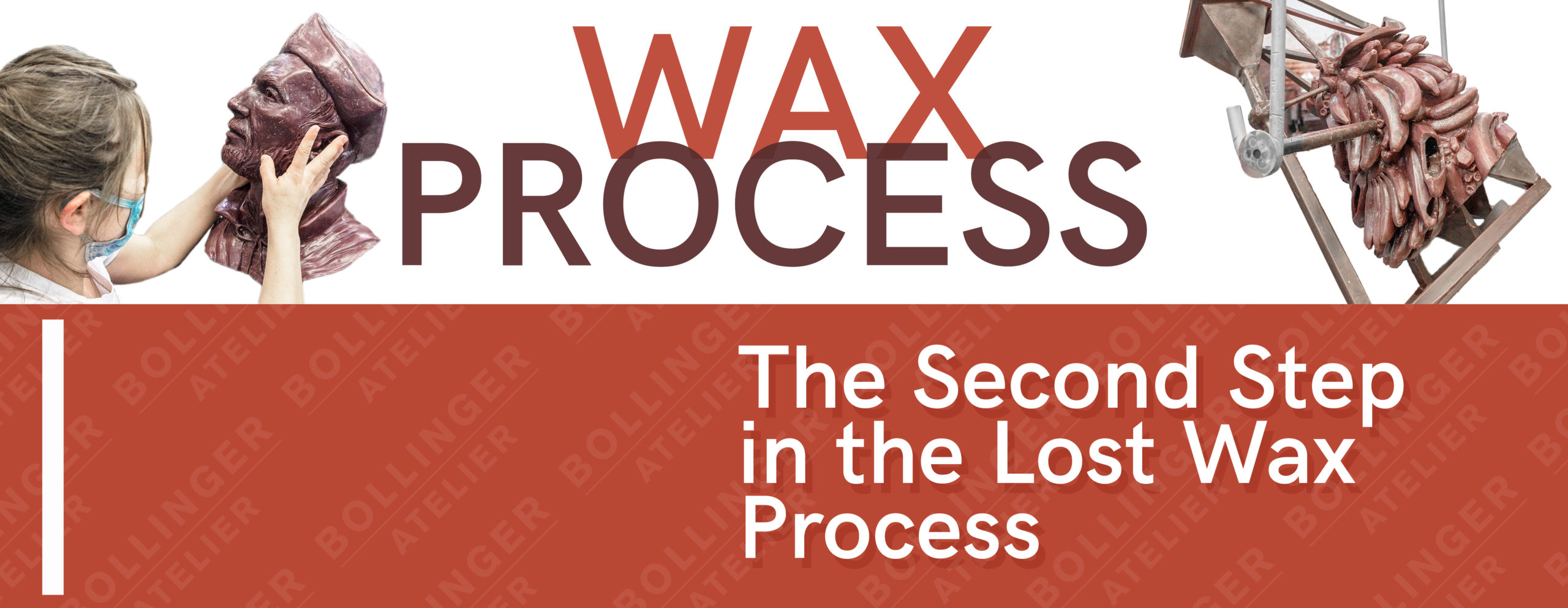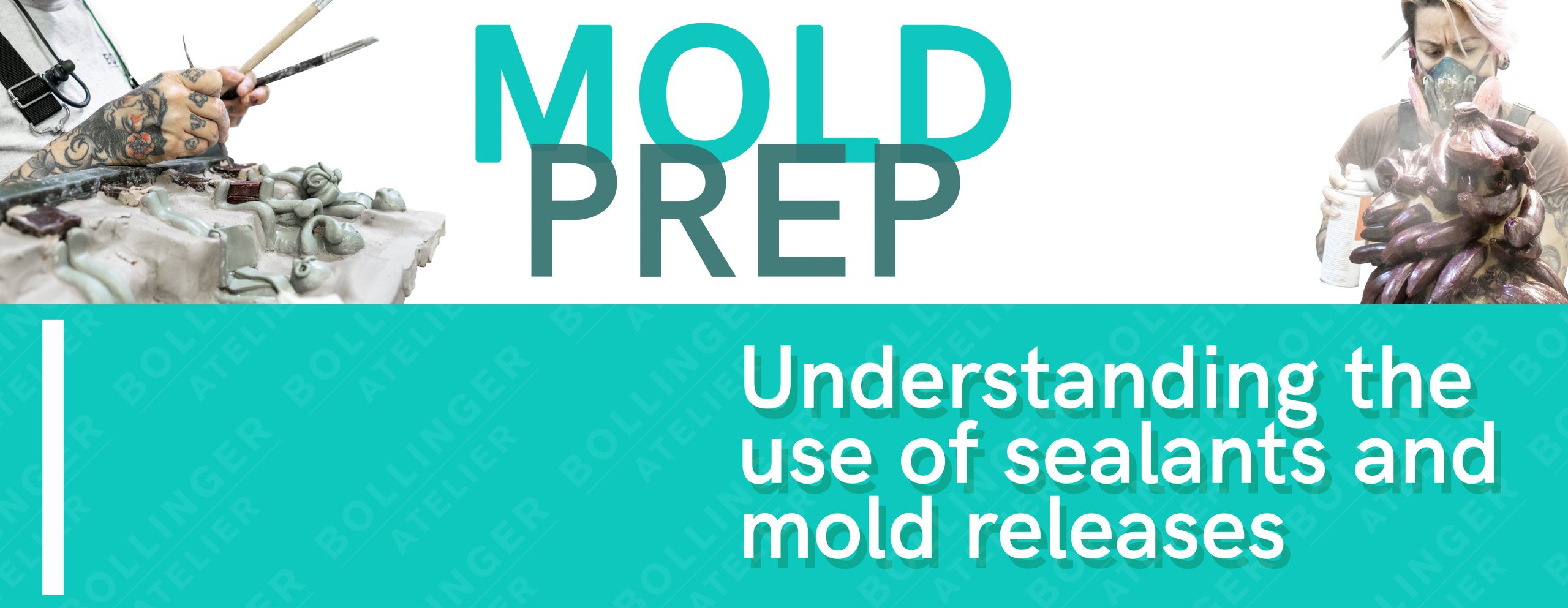Written by Daniel Mariotti
It all started when Scott Webster, one of the founders of an Aerospace company called Orbital ATK asked if we knew anyone that could sculpt. Scott was actually a client of ours who came to us with some personal work of his that we helped cast in bronze. This time though, he was working on a project kept under the radar; a commemorative piece, and was looking for someone to sculpt it. Being a world-class art foundry we have a lot of highly skilled sculptors, Tom Bollinger included, who we ended up suggesting to Scott to help him with his project.
The scope of the project was to create a sculpture of Dr. Harrison H. Schmitt, also known as Jack Schmitt, in recognition of all that he has done for space exploration and science. Jack was one of the last astronauts to step foot on the moon during NASA’s Apollo missions in 1972 (Apollo 17). He is also the only professional scientist to step foot on the moon. Schmitt received his B.S. from Caltech, studied as a Fulbright Scholar in Oslo, and attended graduate school at Harvard. The geological field studies in Norway formed the basis of his Ph.D. During that time and around that same time the Russian aircraft Sputnik (1957) went into space which kick-started his interest in space. Jack joined the astrogeology team as a geologist at the Flagstaff Science Center in 1964, having recently completed his doctorate. In addition to assisting in the geologic mapping of the Moon, he led the Lunar Field Geological Methods project. It was in Flagstaff that he saw a NASA recruitment flyer asking for scientists to become part of the astronaut team for their Apollo program. Jack is frequently quoted saying, “I thought for about 10 seconds, raised my hand and I guess the rest, as they say, is history”.

Photo Courtesy of the Project Apollo Archives
The project quickly became less of a secret to Jack as we needed his expertise on the accuracy of the details. He helped us with things such as how far up he kept his watch and the location of his notepad to the spread of moon dust on his suit. We also did countless hours of research on NASA’s Apollo files that helped us nail down things like the type of fabric used and the design of the helmet.
Tom Bollinger adds, “When Jack Schmidt was brought in as the ‘technical advisor’ things got serious. We realized that we would need to be as close to 100% accurate as possible to all details of Apollo 17 and specifically as to what Jack remembered about his particular EVA, (Extravehicular Activity), or moonwalk. All the research in the NASA Apollo files was critical as well. We were not provided with any actual equipment, only images. “
The A7LB suit was used for Apollo 15-17 and differed from the A7L suit used for previous Apollo missions. Much of the information available about these suits is specific to the previous A7L suit and Jack’s knowledge of the A7LB suit and revised design of the Personal Life Support System, or PLSS, was pivotal in achieving an accurate reproduction. Jack was able to articulate details such as the positioning of the lines that were used for oxygen and water that connected the suit to the PLSS.
The suit’s configuration was also dependent on the mission and the astronaut wearing the suit. Jack’s suit did not bear the red stripes of fellow astronaut Eugene Cernan, which identified him as the mission commander. Being a geologist, one of Jack’s primary tasks was the collection of samples from the lunar surface. This necessitated certain, specific features, such as Jack’s hammer and pockets on the suit used for the collection of the lunar samples.

Image from Apollo mission and our 3D rendered model
Jacob Sterenberg, our General Manager, delves a little deeper into the intricacies of the process: “Our client, Orbital ATK, had a general idea of the basic composition of the sculpture when they approached us. For example, they knew they wanted a realistic, three-dimensional, representation of Harrison “Jack” Schmitt in his A7LB spacesuit, with an American flag, walking on the lunar surface.
We started with a digital 3d model and used this to refine the pose of the figure, the orientation of the American flag, and topology of the moonscape. The use of the digital model allowed us to work closely with Orbital ATK to make subtle, or often more substantial changes until the model accurately reflected the design that our client had envisioned.
Once the composition of the design had been determined, we were able to concentrate on one of the most challenging aspects of this project, which was the details pertaining to the A7LB spacesuit. Using photo references, NASA documentation, and input from Jack Schmitt, we were able to flesh out all of the finite details on the suit. Some suit details and equipment were created using digital 3d modeling and were incorporated into the pre-production 3d model, others were 3d printed and added to the full-scale sculpted prototype, and some were hand sculpted.”
After the approval of Jack and Scott on the clayed-up original, it was taken apart for easy molding and put through our casting process.

Jack Schmitt at Bollinger Atelier with the clayed up original
For the patina we wanted to keep as true to reality as possible, making sure all the color hues were as close to the original suits. Little did we know, but our patina artist Matt follows everything NASA does, which came in handy when it came to making those choices; from getting the right colors of the material and patch, to the height of the moon dust on the suit (with Jack’s input).
Matt says, “As patinas go this was actually a fairly easy piece, just time-consuming. I would say the challenge was determining the proper materials to achieve the effect needed. We used everything from aircraft paint, Dykem, sign painter’s paint, automotive clear coat, and traditional silver nitrate patinas. The silver nitrate used to achieve the lunar surface patina, the silver nitrate on Jack’s hammers, and the high polish on the helmet shield were some of my favorite pieces to do. But, my absolute top favorite part is one that you can’t see because it faces up. I went online and found the time of Jack’s first EVA and painted the hands of his watch to match that time. It’s a little detail that no one will see, but it brought a smile to Jack’s face when I showed it to him. Jack told me we ‘Put him back on the moon’. That was special.”

Detail of watch and notepad on bronze sculpture
A final detail that Jack wanted us to include was to put his wife’s name, Teresa Fitzgibbon, engraved on the piece.
Along with the large scale piece, we made an edition of 50 maquette pieces. These went out to various individuals from Northrop Grumman and Orbital ATK (who was recently acquired by Northrop) as well as Dr. Schmitt’s family and friends. Each one came in a custom box (thanks to the help and skill of speciality packaging company Roswell Bookbinding) with the NASA logo embossed on a magnetic latch which opens up to reveal the piece. It also came with a certificate of authenticity signed, dated, and editioned by the sculptor, Tom Bollinger.
The sculpture was unveiled on June 19th, 2019 in the Kennedy Space Center Visitor Complex in partnership with Northrop Grumman Corporation. In addition to commemorating Schmitt’s contributions to science and space exploration throughout his career of over 50 years, the statue honors the 400,000 Americans who made Apollo a historic success.
“It’s quite humbling to be honored with this extraordinary bronze work of art that sits in the shadow of pad 39A at Kennedy Space Center, where it all culminated for the Apollo program. Here, hundreds of thousands of American men and women accomplished President John F. Kennedy’s challenge of landing a man on the Moon and returning him safely to the Earth.” -Dr. Harrison H. Schmitt
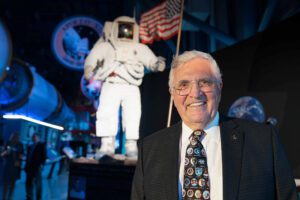
Jack Schmitt in front of bronze sculpture at the Kennedy Space Center Visitor’s Center
Photo Courtesy of Northrop Grumman
Image Gallery of the process:



